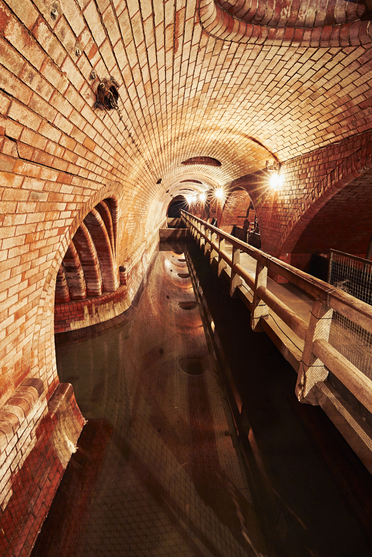Subproject 4: Coarse-mesh Sewer Network Models

In SP4, we are developing approaches for the construction of computational models for metropolitan sewer networks for infectious disease surveillance.
Many pathogens are detectable in wastewater, and thus the testing of wastewater samples for epidemiological tracking of pathogens (such as SARS-CoV-2 has proven to be a useful tool. A major advantage of wastewater sampling is that it is independent of official testing and reporting strategies and can provide a picture of the incidence of infection across the population.
For this, however, the quantities of virus particles that originally entered the wastewater must be determined from the measured virus particle load in the wastewater in order to be able to draw conclusions about the infection process. To do this, we need to know how the pathogens or their particles are transported and chemically degraded in the sewage system. The accuracy of the tracing depends on the level of detail of the underlying sewer network model and the knowledge about the sampling conditions.
In SP3, we develop detailed mechanistic sewer network models based on a well-described city district. However, detailed sewer network models are not feasible for all cities. Coarsening can be necessary because, on the one hand, constructing detailed models for entire cities currently can be too time-consuming and expensive. On the other hand, the detailed information required for detailed modelling may not be available, especially in countries of the global south. Also, computation times for detailed models might be too long for the INSIDe platform approach.
The declared goal of SP4 is to make the integration of sewer network data for large cities possible within the INSIDe plattform. The sewer network of arbitrarily large cities can then be represented either by a single fine-grained or coarse model, a set of fine-grained sub-models or a combination of fined grained and coarse models. For this purpose, we develop algorithms and procedures that allow the automated generation of coarse grained models based on information on fine grained models. In addition, we use the data collected in SP5 on flow patterns in the sewer networks of Munich and Adis Abeba to callibrate mechanistic models and additinoally build and verify our “black box” models if no data on the sewer system are available.
The coarse grained models are tested using the detailed models from SP3.
Both detailed and coarse-mesh sewer network models will be linked to the INSIDe platform (SP1) to connect the transmission models (SP2) with wastewater observations.
Contact: Dr. Andreas Hofmann, andreas.hofmann@tandler.com
